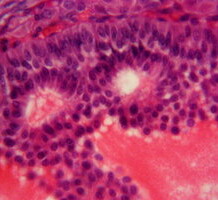Ways To Do Natural Chelation Of Heavy Metal Toxins
|

|
Heavy metals can build inside of the body after being ingested or absorbed from multiple sources, including through food, through water, through the air, and even through some types of vaccinations.
The process of removing these toxins from the body is called chelation therapy. It comes from the Greek word meaning “claw”, which is thought to be because the process of chelation ‘claws’ out these heavy metals from the body.
There are great ways to do natural chelation at home.
Cilantro
This herb is used as a spice throughout Mexico and the Middle East and it is also a great way to improve chelation. According to Doctor David Williams writing in 2009, cilantro is very good at removing mercury, lead and aluminum from the bones and the central nervous system. It is so effective at mobilizing the toxins that the connective tissues might flood with metals.
A Livestrong article reviewed in 2010 interviewed Maile Pouls, the Director of Research for Extended Health, who said that cilantro is so powerful for natural chelation that it outperforms many contemporary man-made chemical medicines used today. Two weeks use of this herb will help you chelate your body naturally.
Chlorella
Chlorella is a micro-algae that is a great natural chelation food. According to Natural News reporting about chlorella’s health benefits, it is high in amino acids that are great at detoxifying and supporting both mental and physical health. It is also very good at binding environmental toxins like dioxin. You should try it in combination with cilantro to achieve very effective results.
Selenium
This non-metallic chemical is great at providing you natural chelation properties. A 1999 study by the University of Arizona found that selenium is effective at reducing metal toxicity. The study showed that selenium is important in providing enhanced function to an enzyme called glutathione peroxidase. The proper function of this enzyme is vital because it protects organisms from the oxidative damage that heavy metals cause.
The food world’s greatest healing plant, garlic, is also a very good way to do natural chelation. The use of garlic for chelation goes all the way back to the 1970s, when Doctor Robert I. Lin used garlic to detoxify children from lead. A 2013 article in Before It’s News also recommends garlic as one of the best natural chelation methods. The sulfur in garlic works well to eliminate heavy metals from the body.
Diet and foods
You can also follow a few-week-long diet that helps you with natural chelation. An article in EmpowHER in 2010 recommends that you eat only foods that are rich in phytic acid. This is because phytic acids are an effective tool to help chelate toxins from our intestines. Foods with phytic acid include:
* Grains
* Seeds
* Nuts
* Soy beans
Bee Wilder writing on her health website recommends going on a high protein diet and especially diet with lots of good fats. Doctor Mary Enig has suggested that protein deprivation can reduce the liver’s ability to remove toxins from the body. She also suggests that trans fats are a bad food that can negatively influence this natural ability to detoxify. The good fats that you should consume a lot during this detoxification period include:
* Butter and lard
* Naturally occurring fats in animals
* Coconut oil
* Eggs
* Seafood
Great food items to add to your diet for natural chelation are Brazilian nuts and amino acids. Brazilian nuts are a rich source of selenium, which was talked about above. Amino acids are essential in removing metals from the body and enhancing liver function.
|
Follow this site
|




















Recent Comments